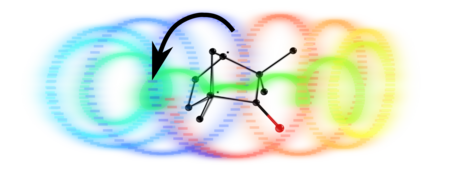Not only in humans, the question of whether someone is right-handed or left-handed is important. Depending on which hand we use, our fingers enclose an object clockwise or against it. Also in the world of molecules, handedness is of great importance. In molecules, the property of having a preferred handedness is even more important than in humans: for certain substances, depending on whether they are right- or left-handed, may be either toxic or salubrious. Therefore, some medications may only contain either left- or right-handed molecules.
The problem here is to identify and separate right-handed and left-handed molecules, which are otherwise completely identical, according to their "chirality" sense of rotation. Because except when in contact with another chiral substance, they behave completely the same. An international research team has now developed a new method for determining the handedness of molecules with extreme sensitivity.
Since the 19th century it has been known that molecules can be present in different handedness. The best known example is the genetic material, such as human DNA, whose structure corresponds to a clockwise corkscrew. To determine the handedness one usually uses so-called circularly polarized light rays, which have either right- or left-handed electromagnetic fields - like a corkscrew along the propagation axis wound. This chiral light is slightly better or worse absorbed when it encounters molecules with the same or the opposite sense of rotation. However, the effect is small because the wavelength of light is much larger than the atomic distances in molecules. The light "senses" the sense of rotation of the molecules only very slightly.
